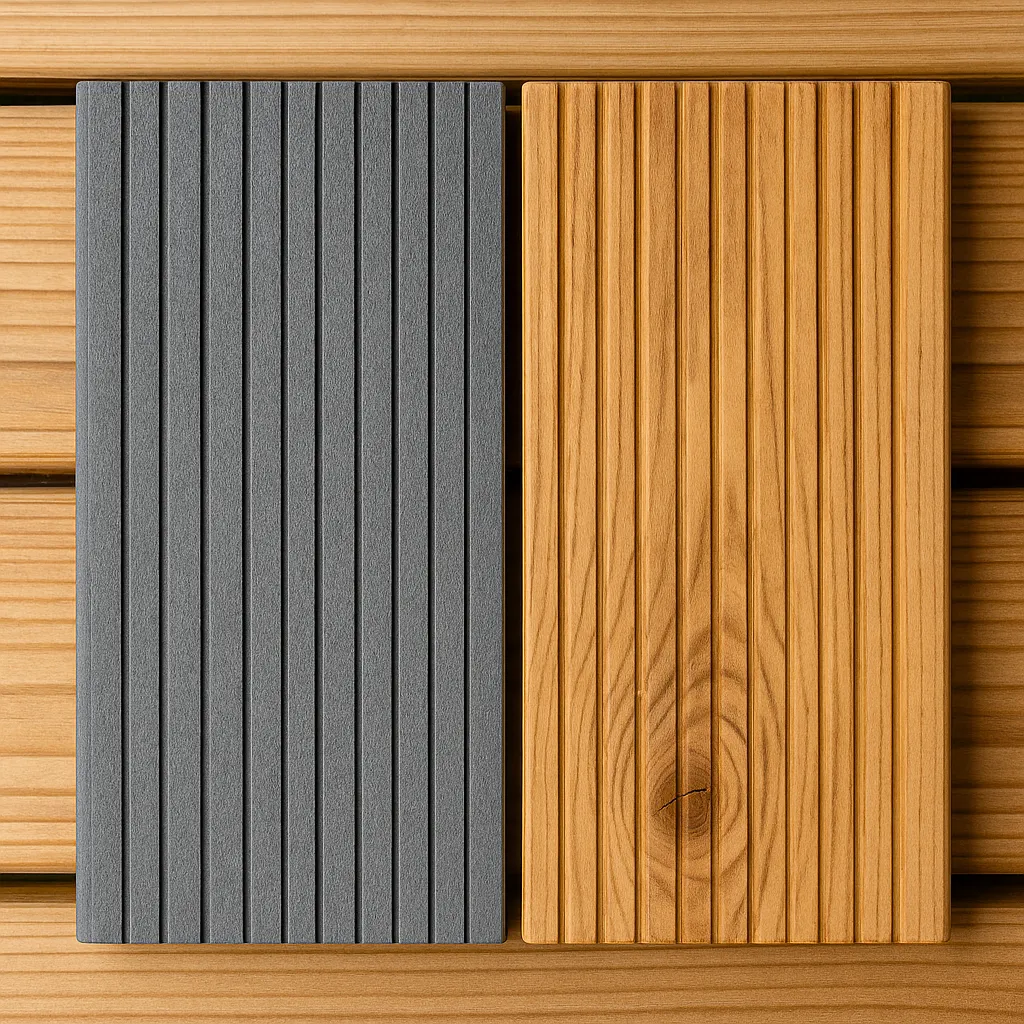
Composite Decking vs. Decking Boards
Composite Decking vs. Decking Boards: What’s the Difference?
When planning a new garden project, choosing the right materials is key – especially when it comes to your decking. Two terms often thrown around are composite decking and decking boards – but what’s the actual difference? And which is the better choice for your outdoor space?
In this guide, we break down the key differences, benefits, and best use cases, so you can make the right choice for your garden.
What Is Composite Decking?
Composite decking is made from a blend of recycled wood fibres and plastics, offering a modern alternative to traditional timber. It’s designed to mimic the appearance of wood but without the usual maintenance or wear.
Key Benefits:
✅ Low maintenance – no sanding, staining, or sealing required
✅ Weather-resistant – won’t warp, rot, or splinter
✅ Long lifespan – can last 25+ years
✅ Sustainable – often made from recycled materials
At Beams and Braces, we supply and install Trex composite decking, one of the leading brands in the UK, known for its durability and premium finish.
What Are Traditional Decking Boards?
When people refer to “decking boards,” they’re usually talking about timber decking, made from softwood (like pine) or hardwood (like oak). These boards are cut directly from natural wood and offer a more rustic appearance.
Key Benefits:
✅ Natural look and feel
✅ Lower upfront cost
✅ Easier to cut or customise on-site
However, timber decking needs regular treatment to stay in good condition and is more susceptible to rot, splitting, and discolouration over time.
Side-by-Side Comparison
Feature Composite Decking Timber Decking Boards Durability Extremely durable (25+ years)Medium (10–15 years)Maintenance Minimal – just occasional cleaning Needs regular treatment Weather Resistance Resistant to moisture, rot, & fading Can warp or rot if untreated Cost Higher upfront, lower long-term Lower upfront, higher upkeep Eco-Friendlines Often made from recycled materials Can be FSC-certified, but uses natural resources Finish Options Wide range of colours & textures Natural timber look
Which One Is Best for You?
Choose composite decking if you want long-lasting performance, minimal upkeep, and a sleek modern look.
Go for traditional timber boards if you prefer a natural aesthetic and don’t mind doing the maintenance.
At the end of the day, both options can look fantastic – but composite decking often proves the better long-term investment, especially for busy homeowners or commercial spaces.
Final Thoughts
Understanding the difference between composite decking and decking boards helps you make a more informed choice when upgrading your garden.
If you're planning a decking installation in Norwich, Norfolk, or the surrounding areas, our team at Beams and Braces can help. We specialise in designing and building beautiful, long-lasting outdoor spaces using both composite and timber decking, depending on your needs.
💬 Thinking about decking? Contact us today for a free consultation and let’s turn your outdoor space into something special.
